The main ingredient of Parsi cuisine is love. On the eve of Parsi New Year, Phorum Dalal scours family recipes, masala dabbas and rich culinary history that give the food a perfect balance of sweet and sour

The aroma of curry powder, spices and marinated gosht (meat) welcomes you, along with the melodious and nonchalant banter of happy people, as you enter a Parsi home.
The magic of their cuisine lies in the ‘masala dabba’, a box that contains ground spices such as red chilli, turmeric, coriander, cumin and Parsi-style garam masala neatly filled in small containers.
ADVERTISEMENT
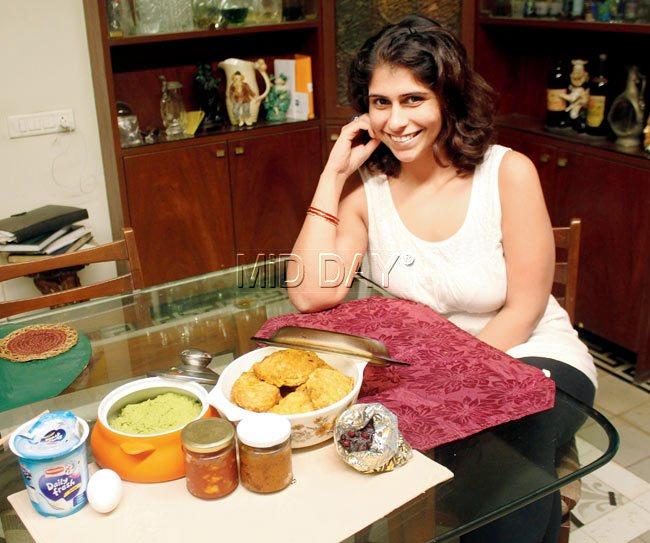 Perzen Patel poses with a Parsi spread at her Dadar residence. Pic/Emmanual Karbhari
Perzen Patel poses with a Parsi spread at her Dadar residence. Pic/Emmanual Karbhari
Peep into the refrigerator and you’ll inevitably spot ginger-garlic paste, a bottle of red-coloured chilli-garlic paste (marchu-lasan), cider or red vinegar and vanilla essence.
“All these are non-negotiable in a Parsi kitchen,” explains Perinaz Avari, who writes on food and travel on her website Peri’s Spice Ladle. She adds that spices such as cardamom, nutmeg, cinnamon and cloves, in their whole and grounded form, are used liberally in savoury and sweet dishes.
“Dig a little deeper and you’ll find unique Parsi ingredients such as dried apricot (Jardaloo) and Charoli seeds as well as almond, cashew and golden raisins,” says the San Francisco-based food writer.
Parsis, who settled on the West coast of India in Gujarat when they came to India from Persia, picked along the way the tradition of stews, gosht (meat) and dry fruits from Iran. They devoured the fish available on the coast and upped the sour content in their food with red vinegar to balance the sweetness of Gujarati cuisine. That is how the Parsis, influenced by their history, founded their own distinct cuisine.
The spice route
Every Parsi family has its own recipe to make traditional dishes, which is why the taste may differ. M Motilal Masalawala is the go-to place for all Parsi masalas. When we meet Ketan Patel, the third generation co-owner at the Grant Road East store, he narrates the story of how his grandfather used to sell salt in Bhuleshwar, and opened a shop that sold ghee in 1912. He went on to sell barely two or three masalas out of his home. With time, they owned six shops in Mumbai under the name of Tiger.
Today with a factory in Mazgaon, his brand of masalas are found in every Parsi household, while his standalone store sells all Indian masalas. One can log on to his website, Mangalmasala.com and order, too. “Star anise, cloves, cinnamon, pepper, methi (fenugreek), rai (mustard seeds) are the main ingredients of dhansak masala, while curry powder has fennel seeds, dried ginger, curry leaves and sesame seeds,” he says.
Curry twist
Parsi food, which is mildly spiced, strikes the perfect balance of sweet and sour. “Not many know this, but Parsis are famous for their curries,” says Perzen Patel, caterer and author of the blog, Bawi Bride. There is the green coconut curry, which is made using coriander, chillies and jeera, and the red curry made of raw peanuts, Kashmiri chillies and cashew nuts. “We also make a white sauce which contains vinegar and sugar and goes very well with fish or khichdi,” she adds.
The egg or ‘edu’ has a great role to play in Parsi cuisine, too. “We can eat egg with anything. Parsis strongly believe, ‘When in doubt, break an egg on it’. We have dishes such as bhinda (ladyfinger) par edu, tamato (tomato) par edu and salli (potato chips) edu,” says Patel.
Legendary sweet tooth
Ravo, a semolina pudding or Sev-Dahi is a sweet roasted vermicelli preparation, served with a dollop of cardamom vanilla-flavoured yogurt are staple breakfast items for Parsis. Apart from this, classic Parsi sweets include Lavras (like barfi), Bhakras, which are fried donuts, the famous Lagan nu Custard, a rich creamy wedding custard and Caramel pudding. “Some dishes, which Parsis don’t make at home often but are easily available in some stores, include Chapat, a cardamom and vanilla-flavoured pancake with Charoli seeds and Kumas, a fermented cake.

Parsi celebratory dish, Sev Dahi. photo credit Peri’s Spice Ladle
The cuisine today
Over the years, Parsi cuisine has become more Indianised in its cooking techniques and use of ingredients. While masalas are bought ready made, dishes are cooked in the oven to speed up the process. “In addition, one can see the influence of Iranian cafes in our Parsi egg cutlets, chicken puffs and Khari biscuits, which was not part of Parsi cuisine.
The British influence is evident in our love for puddings, jellies and the one-of-a-kind savory Parsi Saas ni Macchi — fish in sauce preparation,” says Avari. “Food and cooking, in general, has changed to accommodate our fast-paced modern lives, and Parsi cuisine is no exception to that rule,” she adds.
But what makes Parsi dishes stand out so distinctly, compared to other Indian foods, we wonder. “I often complain to my mom that my food never tastes exactly like hers, and her kind response is my greatest lesson on food: ‘It doesn’t have to taste like mine, it needs to taste like your food. Just remember to add patience and love to your dish,’” concludes Avari.
How it all began
The Parsis of India are Persian Zoroastrian immigrants who settled on the west coast of India (Gujarat) around the 7-9th century CE. For over 1,000 years, the Parsi cuisine is a true picture of what the Parsis' love for good food has added to an already colourful Indian food scene, evolving into a unique regional Indian cuisine with ancient Persian touches.

Gujarati cuisine, although a key influence on early Parsi food, was also predominantly vegetarian in its diet. Hence, it's interesting to see that many Parsi meat preparation lean towards Persian cooking techniques, often bringing together a combination of meat, vegetables and lentils with Indian spices.
Coastal influence and the use of fish in the cuisine can be traced to Parsis settling in Mumbai, while the later arrival of Zoroastrian Iranis and the Irani cafes on the West Indian food scene added a new layer of inspiration to the
Parsi cuisine.
British influences on Parsi food habits are visible in the use of bread as well as the puddings, custards and sauces which make an appearance in all Parsi homes.
Flavours from the past
Chapat, a sweet crepe, and Murrabo, a dessert made from white pumpkin, are traditional Parsi dishes
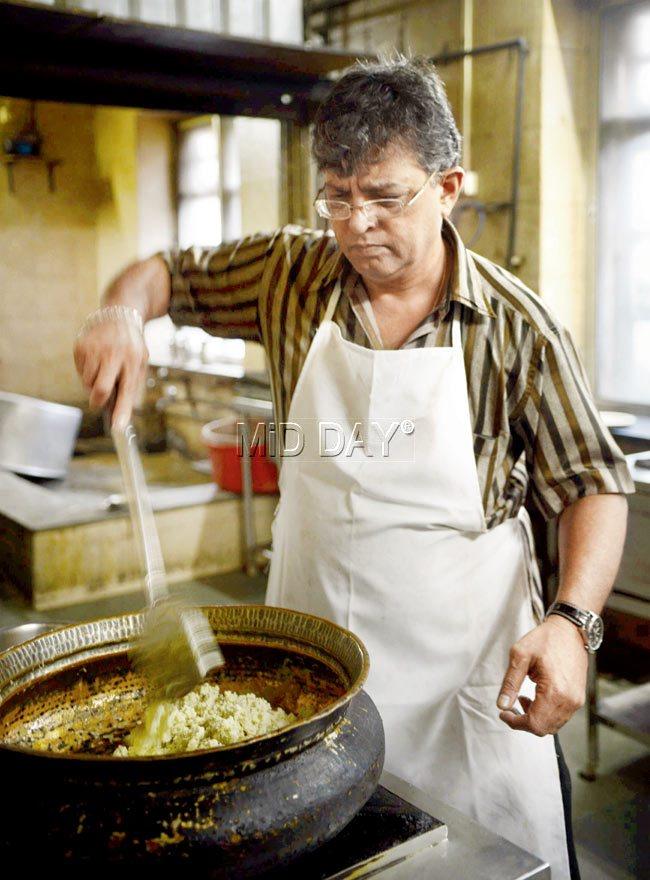
As a child, the Murrabo, made from white pumpkin, was Ripon Club caterer, Tehmtan Dumasia’s favourite dish. Pics/Bipin Kokate
Chapat
Ingredients
>> 1 cup maida (white flour)
>> 2 eggs
>> 1 tsp vanilla essence
>> 1 cup milk
>> 5 tbsp sugar
>> 1 tsp nutmeg and cardamom powder
>> Oil to shallow fry
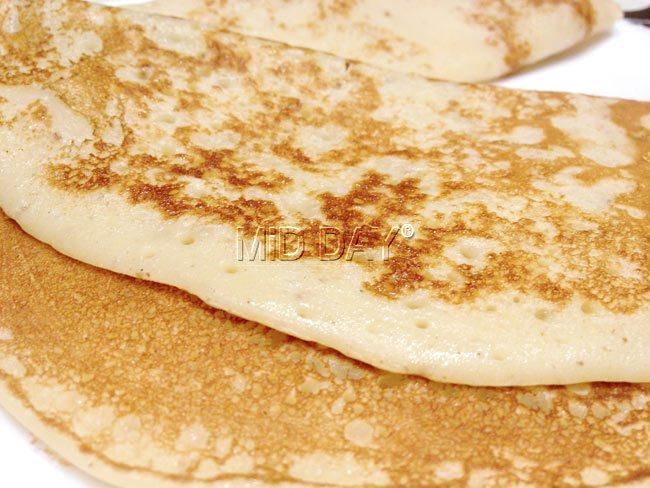
Method
>> In a bowl, beat the maida, egg, milk and sugar
>> Add the essence, nutmeg and cardamom
>> If the batter is too thick, thicken it will a little milk
>> In a non-stick frying pan, heat a tablespoon of oil and spread a spoonful of batter.
>> Wait until small bubbles form on the surface and the Chapat comes off clean on the edges
>> Serve hot with honey and a hot cup of chai
Murrabo
Ingredients
>> 3 kg white pumpkin, grated
>> 1 kg mawa
>> 1 kg sugar
>> 50 g charoli seeds
>> Rose water
>> 10 drops of vanilla essence
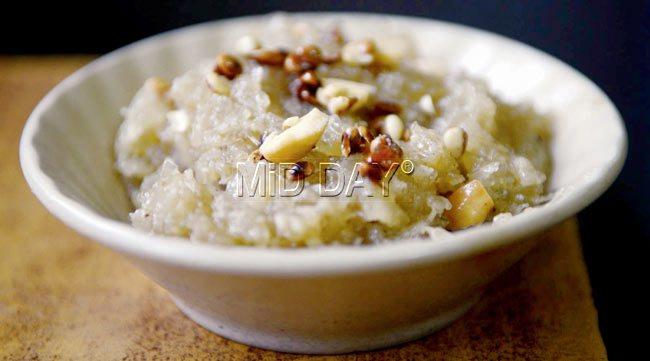
Method
>> In a heating pan, boil the grated white pumpkin
>> Remove the excess water and sauté the pumpkin till it turns crispy
>> Add the sugar and stir till it melts completely
>> Add the mawa and stir continuously so that it doesn’t form lumps
>> Once the mixture is completely mixed, add rose water and vanilla essence
>> Cool and garnish with charoli seeds, ground cardamom and nutmeg
To place an order for Parsi food, call T Dumasia on 9820085528
Store full of Parsi delicacies
What started in 1943 as a shop that sold ghee from Porbandar, Belgaum Ghee Depot, run by third generation owner Farrokh Workingboxwala, now sells Parsi food since 27 years. Head here for their famous gosht — mutton, chicken and fish — kebabs, patties and cutlets. Among the traditional fare, try Dal Poli, Mava Poli, egg on Tomato, Dhansak (on Tuesday and Fridays), and even pickles and vinegars from Navsari.

Belgaum Ghee Depot opened in 1912 as a shop that sold ghee from Porbandar. Today, it sells Parsi delicacies including sweet and savoury snack items, full meals and even pickles. Pics/Phorum Dalal
Workingboxwala also sells sweets such as Dar-ni-Pori, puff pastry pie with a sweet lentil filling, Vasanu, a thick, sweet and spicy winter fudge and Popatji, a pastry fermented in toddy.
On the savoury side, delights such Parsi Kharia (trotters), Gharab nu Achar (fish roe pickle), Titori, fresh sprouted lentils and Fried Bheja, which are not often made at home, are available here.
At: 104 Naushir Bharucha Marg, Belgaum Ghee Depot, Nana Chowk, Grant Road (West)
Call: 23887746
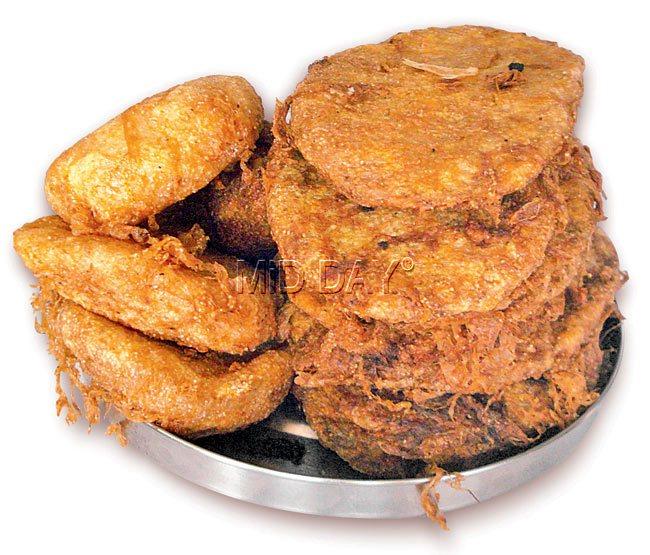
Mutton Pattice Rs 25

Egg on tomato Rs 30
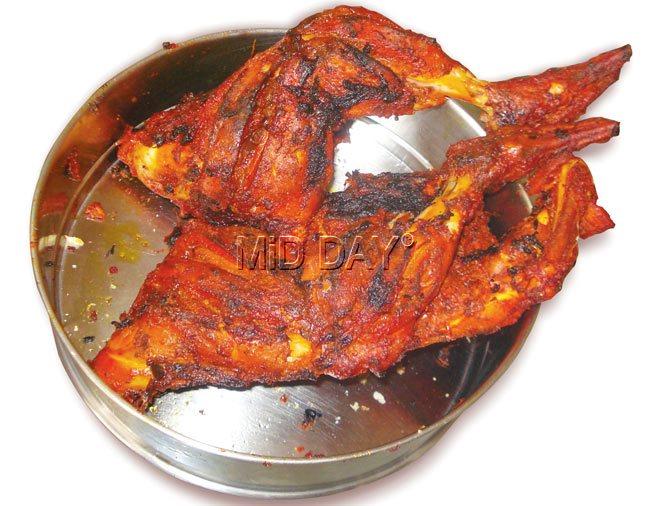
Tandoori Chicken Rs50
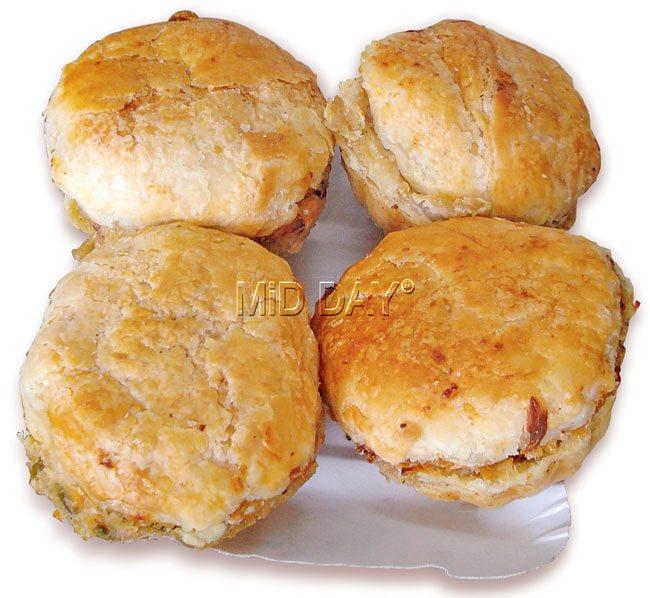
Chicken Pattice Rs 25
 Subscribe today by clicking the link and stay updated with the latest news!" Click here!
Subscribe today by clicking the link and stay updated with the latest news!" Click here!







